Summer is always just around the corner when you live in Australia, and many of us are bracing ourselves for sweaty days and balmy evenings. There’s only so much a cold beer and a pool can do to keep you cool – if it’s indoor comfort you want, then you can’t go past a split system air conditioner. Split systems are one of the more popular air conditioning varieties gracing our homes with a cool breeze, and two brands are among the most popular. They are Fujitsu General and Kelvinator.
Both brands are big players in the world of cooling and heating, but which reigns supreme? Which one has the best product range, and which offers the biggest bang for your buck? Here, we take a look at their systems to find out how they compare in a straight head-to-head battle.
Fujitsu General vs Kelvinator: Air Con Comparison
Being the two major brands in the air conditioning world, you’d rightfully expect that the two will offer a comprehensive range of air conditioners to suit a variety of budgets. Below we compare some of the leading models of air conditioners from each brand in three different price ranges.
Air conditioners under $1,000
Both brands have strong offerings in the cheaper end of the price scale, let’s see how they compare.
Fujitsu General
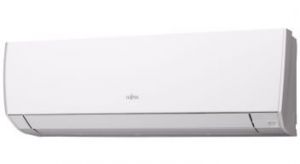
“Australia’s favourite” air comes in here with the 2.5kW unit, codenamed ASTG09CMCA. It has a suite of handy features to help keep your cool. It features a ‘low noise mode’, which is essentially a quiet mode designed to send you off to sleep with a whisper, and then you have the economy mode to eliminate maximum power settings. It contains various sensors to determine human activity in the room to make adjustments, and an airflow adjustment sensor to maintain a steady temperature. Steadiness is the key to avoiding bill shock with air conditioners, and Fujitsu here have addressed this. Retailing for around $1,000, it can be found for $800, which represents solid value for money.
Kelvinator
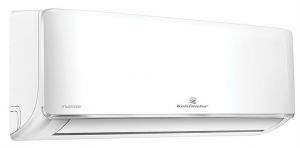
If you’d like to keep it cool like a Kelvinator, then you can’t look past this 3.5kW unit, code named KSV35HRH. Although it retails for over $1,000, it can be found under that amount rather easily. A fairly moderate power level for the price, this bad boy is probably best suited to smaller rooms; say about 20m² in size. It’s a reverse cycle, inverter unit, which basically means both the condenser and evaporator are found together, and that the speed of the compressor is easily controlled. The end result means more economical and controllable cooling.
Air conditioners under $2,000
If your budget can stretch a wee bit to buy a unit that costs over $1,000 then you might be pleasantly surprised at the range on offer from both Fujitsu General and Kelvinator. Here’s our pick of the bunch.
Fujitsu General
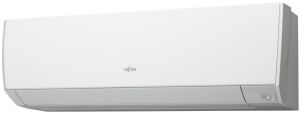
When you step up your budget, you can also expect a step up in unit power. For around $1,500 you can expect to get the Fujitsu ASTG18KMCA, which retails for $2,589, but it can be found cheaper. It boasts 5kW of cooling power, and 6kW of heat. It has a suite of auto settings, like airflow adjustment, positioning louvres, restarts and auto changeover between heating and cooling. As you’d expect it features a human sensor, a sleep timer and program timer, as well as economy mode. An added bonus is that it’s also a quiet operator at 42 decibels – barely louder than a whisper.
Kelvinator
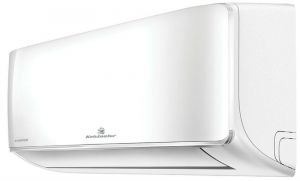
Kelvinator also comes to play hardball here in this price range. The KSD71HRH packs in 7.1kW of cooling power and has all the features you’ve come to expect from Kelvinator. Such features include:
- Auto and manual operation with 24-hour timer
- Climate control and sleep mode
- HEPA filter, and negative ion filter
This unit also operates at 50 decibels, which is quieter than a ‘quiet’ conversation. Retailing for $1,849, this Kelvinator air conditioner can perform in a larger room such as a lounge or home office and will make those hot summer days not so bad.
Cheap and cheerful?
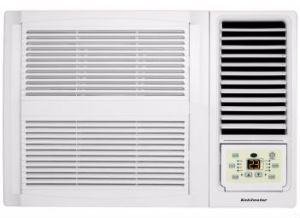
You might be surprised to know that Kelvinator makes an expansive suite of cheaper air conditioners starting from around the $400 mark. You won’t get a split system unit here, rather a window unit. These air conditioners simply offer easy cooling in a pinch, and also make for easy installation. If the in-laws are coming around and you’re afraid your mother in-law’s face will melt off once the mercury hits 30°C then a window air conditioner can be a quick fix. They’re generally not as effective as a split system air conditioner, but they do provide good relief, and Kelvinator have a solid line-up in this regard.
What air conditioning features do I need to consider?
There are four main factors you need to consider before purchasing either a Fujitsu General or Kelvinator air conditioner. They are:
- The range they offer
- The technology included
- Noise levels of the air conditioners
- Who offers the best bang for buck
What choices do they offer?
Fujitsu General offers a large choice of systems to suit any household. Its range includes wall mounted, multi type, floor and ceiling consoles, cassette, and ducted air conditioners. Fujitsu also presents a number of sleek and modern designs for those consumers looking for more attractive systems in their home. Kelvinator has a limited range, with the choice of split system, reverse cycle and window wall air conditioners.
Which boasts the best technology?
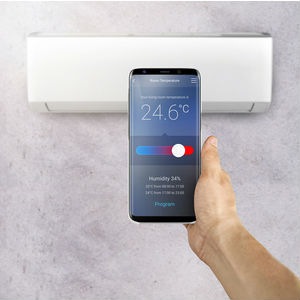
When comparing the technological specifications of each brand, Fujitsu General takes home the top award. It brings human sensor technology which will adjust the temperature of the room when someone leaves or enters, whereas Kelvinator is yet to offer this as a feature on its air conditioners. The human sensor feature will kick into action when no movement is detected in a room for more than 20 minutes, when it will switch to an energy saving mode and will return to normal when someone re-enters the room.
Kelvinator air conditioners come with a BioFresh filtration technology, which purifies, sterilises and deodorises the air within the home. If you’re looking for an air conditioner which keeps your air nice and clean, then Kelvinator could be your perfect air conditioner brand. But if you’re more impressed by the human sensor feature, Fujitsu is hard for any manufacturer to beat.
Which offers the quietest products?
When you compare the specifications of a similar unit from each brand, they come out fairly equal in terms of noise levels. For example, a 5KW capacity split reverse system from Fujitsu has a maximum indoor noise level of 46 dBA – the same as Kelvinator’s equivalent 5KW model.
Which offers the best value for money?
Arguably the only area in which Kelvinator trumps Fujitsu General is price. This is especially true when considering Kelvinator’s bargain-basement window-type offerings. However, given the added features of the Fujitsu range, you might consider those models worth the extra money. Here is a guide to costs for different size systems:
| Capacity | Fujitsu General | Kelvinator |
|---|---|---|
| <2kW | – | Around $400 |
| <3kW | $800-$1,000 | $600-$800 |
| <5kW | $900-$1,800 | $900-$1,400 |
| <8kW | $1,900-$2,300 | $1,500-$2,300 |
| <9kW | $2,400-$4,700 | – |
Source: Appliances Online
Overall, Fujitsu seems to offer a greater variety of systems and more enhanced features to boot. So if that’s what you’re looking for then that particular brand could be a good choice. However, if it is air conditioning simplicity and a cheaper price you crave, then Kelvinator could be the way to go. Overall you’ll have to weigh up each brand with your budget and desired features in mind to determine which air conditioner is best for you.
Air Conditioner Reviews & Ratings
Original Author: Veronika Hleborodova

Share this article